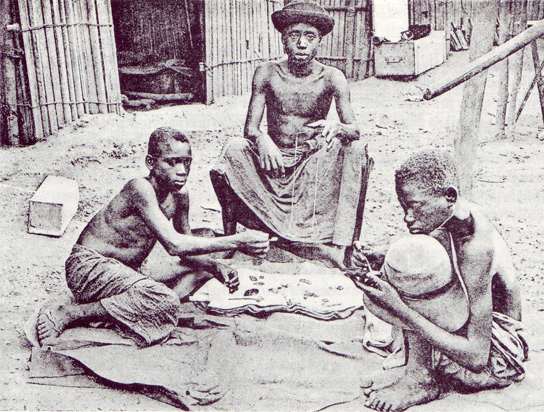Asante Art
Art and the gold trade of the Asante Kingdom
The kingdom’s active role in the gold, cloth, and slave trades brought vast wealth that fostered especially rich artistic traditions. The king Osei Tutu was perceived as a creative force whose dynamic patronage of the arts, along with his health and appearance, were considered an important metaphor for his kingdom’s strength and stability. The art of Asante, like that of all Akan peoples, wove together the verbal and the visual by illustrating spoken proverbs that communicated accepted truths and practical advice. In courtly art, verbal motifs relating to the cohesion and prosperity of the kingdom were used extensively.
Gold was an integral component of Asante art and belief. Considered an earthly counterpart to the sun, it was the physical manifestation of life’s vital force, or “soul” (kra), and was incorporated into the ruler’s regalia to represent his purity and vigor. At the political level, gold indicated the kingdom’s dominance over rivals. Much gold entered the Asante court via tribute or war, and was worked there by artisans from conquered territories who introduced regional sculptural forms that were adopted for official use at the kingdom’s capital in Kumasi. The court’s sovereign power was further displayed through its regulation of the regional gold trade.
Goldsmiths and Gold-working techniques applied to Asante Art
Goldsmiths (sikadwumfo or sikananfo) are highly skilled specialists who learn their trade during a long apprenticeship. Thomas Bowdich noted during his residency in Kumase in 1817 that these craftsmen occupied a separate quarter known as the dwinfour that was located within the bounds of the royal palace complex. Three basic techniques of working gold have been identified in relation to the Asante. The first involves beating gold into leaf, foil or sheet, which is frequently decorated with repoussé work and dot-punching from the front. The second method, known as direct casting, makes use of a natural object such as a seed pod or a shell as a model around which a clay mould is formed. The object is incinerated within the mould when it is heated up leaving a void of the exact same size and shape from which a casting can be created. The third technique is known as the lost wax or cire perdue casting method and is the one most commonly associated with the Asante. Bowdich was the first European to describe the step-by-step procedures involved in this process, which suggests that he may have witnessed first-hand the creation of gold ornaments that he later donated to the British Museum on his return to England in 1818.

Once the wax model has hardened off completely the smith either dips or paints a layer of very fine clay slip, which has been mixed with finely ground charcoal, over the model taking care to ensure that all parts are covered. After the first layer of slip has dried further layers are added until the clay casing measures around half a centimetre in depth. A thick outer casing is formed by carefully pressing wet clay around the inner clay slip casing. The completed mould is then allowed to dry for several days. Before the casting takes place, the mould is heated in the furnace (ebura) until it is very hot and then inverted. This allows any molten wax which has not soaked into the mould walls to be tipped out. After the mould has cooled down a small clay cup (semoa) containing small pieces of gold is grafted over the holes left by the wax rods. Clay is then plastered heavily around the joins and the mould is allowed to thoroughly dry.
On the day of the casting, the mould and cup are placed in the furnace, the cup downwards, until the gold is judged to have become completely molten. This process requires that the charcoal fire is kept at a constant high temperature by having air pumped into it by bellows. At the right moment the mould and cup are seized with a pair of tongs (da) and swiftly inverted, which causes the molten gold to rush down the channels and into the cavity. The mould is held in this position, or placed on the ground, while the molten gold cools and hardens within the cast. The mould is then smashed open and the casting is picked out. When it has completely cooled the casting is cleaned by picking off the blackened mould material which has baked on in the heat. It is then scrubbed in water mixed with the juice of limes and is trimmed and finally polished with a paste of very fine clay and a soft cloth.

